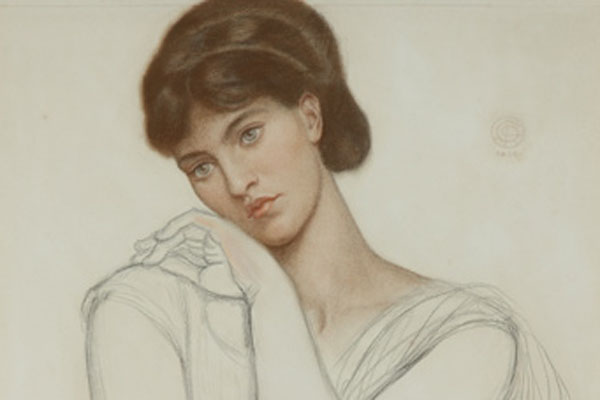Andrew Lloyd Webber cried when he first came to Wightwick Manor, and standing in the Great Parlour of this magnificent Victorian villa you can see what moved him to tears of joy. Lloyd Webber loves the Pre-Raphaelites (he’s always had the common touch) and Wightwick is a living monument to the one artistic movement that England can truly call its own. There’s William Morris wallpaper on the walls and Charles Kempe stained glass in the windows — and beneath the minstrels’ gallery is Edward Burne-Jones’s ‘Love Among The Ruins’ (which has this month travelled to London for the biggest Pre-Raphaelite exhibition since the 1980s).
Tate Britain’s Pre-Raphaelites: Victorian Avant-Garde (on until 13 January) promises to be that rare thing, a blockbuster of a show devoted to an entirely English school of artists. Still frequently dismissed by smart sophisticates as sentimental chocolate box, the Pre-Raphaelites have actually aged far better than the modernist painters who usurped them. Their art still feels fresh and vital, and like all the best artworks you don’t need to be an expert to enjoy them. The stories behind these pictures reward a lifetime’s study, but above all, unlike so much modern art, they’re primarily things of beauty. The Tate’s show will introduce these marvels to a new generation of enthusiasts, and remind the rest of us that the Victorian era was an age of grand passions, not just dowdy prudes.
But the Pre-Raphaelite Brotherhood didn’t really make art for museums. More than any other movement, they painted pictures for domestic settings, and at Wightwick Manor you can see their artworks in the round, in harmony with the splendid décor that surrounds them. The first time this art made complete sense to me was when I saw it here, in situ. Naturally, it’ll be a rare treat to see so many Pre-Raphaelites under one roof at the Tate, but the best place to see the Pre-Raphaelites as the Pre-Raphaelites themselves intended is here at Wightwick, just outside Wolverhampton, of all places.
Wightwick Manor was built in 1887 by Theodore Mander, a prosperous paint manufacturer.








Comments
Join the debate for just £1 a month
Be part of the conversation with other Spectator readers by getting your first three months for £3.
UNLOCK ACCESS Just £1 a monthAlready a subscriber? Log in